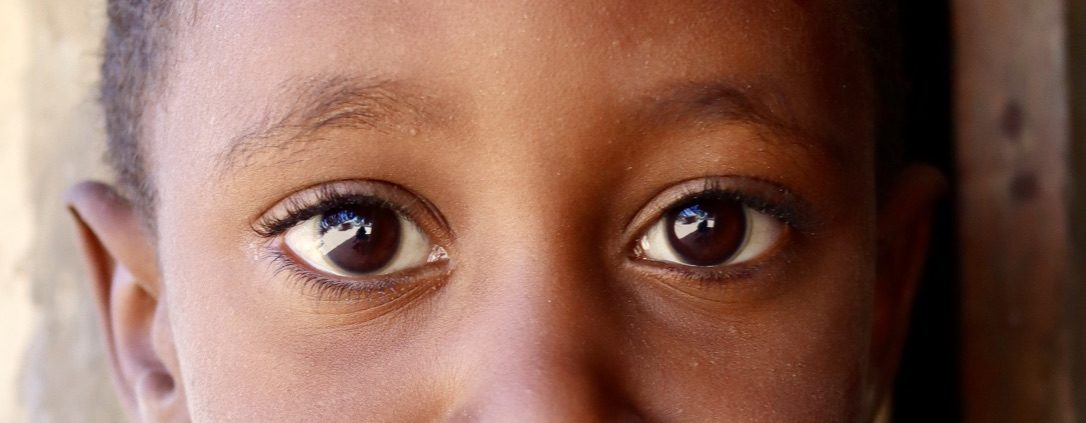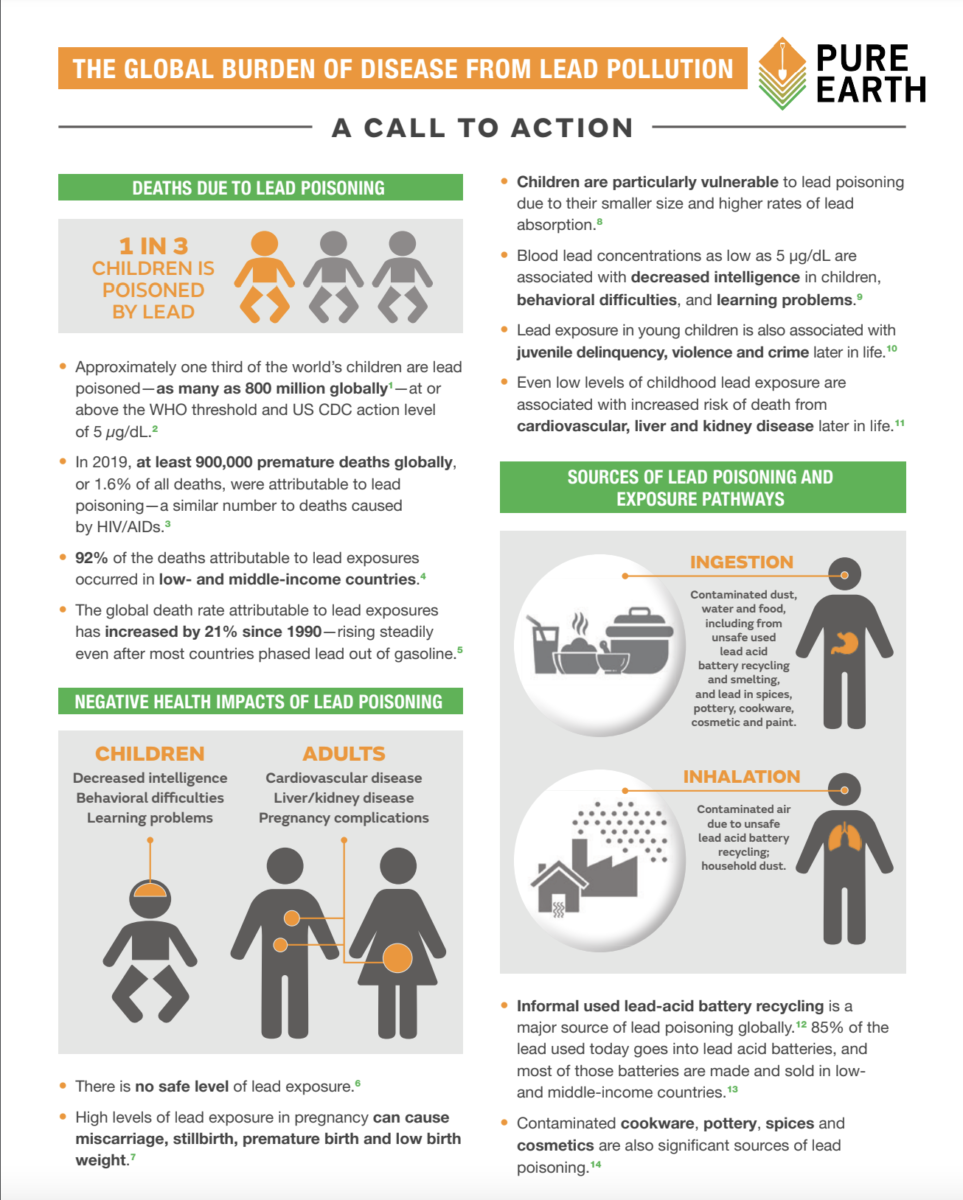Lead Poisoning Fact Sheet: The Global Burden of Disease
This lead poisoning fact sheet provides an overview of the global burden of disease from lead poisoning and pollution, and an understanding of the sources of exposure, negative health impacts of lead poisoning, the economic costs, and solutions that are available.
Lead Poisoning is on the rise. 1 in 3 of the world’s children—as many as 800 million globally—have elevated lead levels at or above the WHO threshold and US CDC action level of 5 μg/dL.
The global death rate attributable to lead exposures has increased by 21% since 1990—rising steadily even after most countries phased lead out of gasoline.
Pure Earth’s Global Lead Program is implementing lead poisoning solutions around the world to protect children from lead exposure.
What does the global lead poisoning crisis mean for children? Why are lead exposures on the rise? Scroll below to read our lead poisoning fact sheet or click to download the two-page lead poisoning fact sheet:
Lead Poisoning Fact Sheet
Lead Poisoning Deaths
- Approximately one third of the world’s children are lead poisoned—as many as 800 million globally1—at or above the WHO threshold and US CDC action level of 5 µg/dL.
- In 2019, at least 900,000 premature deaths globally, or 1.6% of all deaths, were attributable to lead poisoning—a similar number to deaths caused by HIV/AIDs.
- 92% of the deaths attributable to lead exposures occurred in low- and middle-income countries.
- The global death rate attributable to lead exposures has increased by 21% since 1990—rising steadily even after most countries phased lead out of gasoline.
Negative Impacts of Lead Poisoning
- There is no safe level of lead exposure.
- High levels of lead exposure in pregnancy can cause miscarriage, stillbirth, premature birth and low birth weight.
- Children are particularly vulnerable to lead poisoning due to their smaller size and higher rates of lead absorption.
- Blood lead concentrations as low as 5 µg/dL are associated with decreased intelligence in children, behavioral difficulties, and learning problems.
- Lead exposure in young children is also associated with juvenile delinquency, violence and crime later in life.
- Even low levels of childhood lead exposure are associated with increased risk of death from cardiovascular, liver and kidney disease later in life.
Lead Poisoning Sources and Exposure Pathways
- Informal used lead-acid battery recycling is a major source of lead poisoning globally.12 85% of the lead used today goes into lead acid batteries, and most of those batteries are made and sold in low- and middle-income countries.
- Contaminated cookware, pottery, spices and cosmetics are also significant sources of lead poisoning.
Economic Costs of Lead Poisoning
- According to 2020 analysis by the World Bank, childhood lead exposure is estimated to cost lower- and middle-income countries almost USD $1 TRILLION IN LOST ECONOMIC POTENTIAL.
- In many countries, economic losses from lead exposure EXCEED THE TOTAL VALUE OF DEVELOPMENT AID to that country.
Lead Poisoning Solutions Exist and are Cost Effective
- The economic benefits of reducing childhood lead exposure in the USA alone is estimated between $110 billion and $319 billion annually.
- Decreases in blood levels have been linked to significant reductions in crime rates.18 •Soil remediation is cost-effective and provides excellent return on investment.
- Soil remediation is cost-effective and provides excellent return on investment.
UNICEF and Pure Earth recommendations on what countries can do to address lead poisoning and pollution and reduce exposure among children:
- Set up monitoring and reporting systems, including blood lead level testing.
- Implement prevention and control measures, including preventing children’s exposure to high-risk sites, remediating contaminated sites and removing lead from products
- Strengthening health systems so that they are equipped to detect, monitor and treat lead exposure among children;
- Conduct public awareness education and behavior change campaigns about the dangers and sources of lead exposure with direct appeals to parents, schools, community leaders and healthcare workers.
- Develop, implement and enforce environmental, health and safety standards for manufacturing and recycling of lead acid batteries and e-waste, and enforce environmental and air-quality regulations for smelting operations.
- Create global metrics to verify results of pollution interventions on public health, the environment and local economies; build an international registry of blood lead level studies; and update international standards and norms around recycling and transportation of used lead acid batteries.


